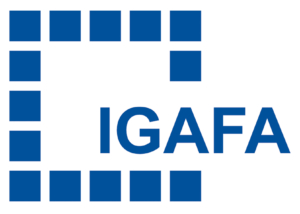ADLERSHOFER KOLLOQUIUM Analytik: Prof. João Paulo Costa Tomé
ADLERSHOFER KOLLOQUIUM Analytik
Topic: Photoactive materials for biomedical and environmental applications
Presenter: Prof. João Paulo Costa Tomé, Center for Structural Chemistry, Institute of Molecular Sciences & Department of Chemical Engineering; Instituto Superior Técnico (IST), University of Lisbon, Lisbon, Portugal
Chair: Dr. Rudolf Schneider, BAM – 1.8
Summary:
The power of light has attracted the interest of many scientists, which have been using it in almost all sciences, if not in all of them.1 However, to fine-tune light’s properties and exploit it in different applications, photoactive materials with adequate physicochemical properties and functionalities are required. Porphyrins and related chromophores are well-known light-induced dyes that have been largely explored in lightbased technologies. In this context, the decoration of the periphery of this type of photoactive dyes with different (bio)motifs and the selection of their central metal atoms opens the possibility to fine-tune their physicochemical properties and the functionalities of novel photoactive materials. This talk will be highlighting some of our recent works on porphyrins, chlorins and phthalocyanines, presenting the used synthetic strategies and some of the obtained results in different areas of research, namely in: i) targeted photodynamic therapy (tPDT);2 ii) photodynamic inactivation of microorganisms (PDI);3 iii) (photo)catalysis; 4 iv) optical (chemo)sensing;5 and v) photoinduced energy- and electronic-transfer materials.6
References
1. G. Ciamician, “The Photochemistry of the Future”, Science, 1912, 385-394.
2. a) J. Photochem. Photobiol. B: Biol. 2023, 243, 112716; b) J. Photochem. Photobiol. A: Chem. 2023, 442,
114768; c) Front. Chem. 2022, 10:825716; d) J. Mater. Chem. B, 2022, 3248; e) Mater. Adv. 2021, 1613; f)
Mol. Pharm. 2020, 17, 2145.
3. a) J. Photochem. Photobiol., B: Biol. 2022, 233, 112502; b) J. Photochem. Photobiol., B: Biol. 2022, 231,
112459; c) Dyes and Pigments, 2021, 109557; d) ACS appl. Bio Mater. 2020, 3, 4044; e) Photodiagnosis
Photodyn. Ther. 2020, 31, 101788; f) Dyes and Pigments, 2020, 181, 108476; g) ChemPhotoChem, 2019,
3
4. a) Eur. J. Inorg. Chem. 2021, 28, 2857; b) J. Organomet. Chem. 2021, 121751; c) Polyhedron; 2019, 158,
478; d) ACS Applied Nano Mater. 2019, 2, 465.
5. a) Nanomaterials, 2022, 2, 1892; b) Sensors, 2021, 21, 1632; c) Ing. Chem. 2018, 57, 3855.
6. a) Nanoscale, 2022, 14, 13155; b) Dyes and Pigments, 2020, 177, 108280.
Please register at juliane.schaefer@bam.de
